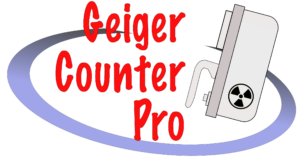Everything you ever wanted to know about Geiger Counters and MORE

Ron Ulbrich
I have approximately 40 years of experience in radiation detection and safety and am passionate about learning and sharing interesting facts about our radioactive world.
geiger counter pro
This website is more than just another online geiger counter online store; it strives to provide educational videos, articles, news, history, and experiments you can do at home. We believe over time it will become the site to find everything you’ll ever want to know about geiger counters and much more. So if you’re interested in ionizing radiation and how to detect this invisible realm, you’ve come to the right place.
GEIGER VS. SCINTILLATION COUNTERS
Many believe that any hand-held radiation detecting instrument is a Geiger Counter, but that is not true. Hand-held survey radiation meters come in a variety of types. The two that Geiger Counter Pro offer are differentiated below.
Geiger Counter

Geiger counters are handheld meters that use Geiger-Müller type radiation detectors. These are gas filled detectors in various shapes and sizes that output identically sized pulses independent of the radiation type or energy. The most common sensors detect alpha/beta/gamma/x-ray radiation or just gamma/x-ray.
KEY FEATURES
– Versatility
– Low Cost
Scintillation Counter

Scintillation counters employ scintillating materials that interact with ionizing radiation and produce a pulsed output proportional to the energy. They come in a variety of shapes and sizes and are designed to optimize detecting either alpha, alpha/beta, or x-ray/gamma.
KEY FEATURES
– Cover Larger Areas
– High Sensitivity
A tribute to hans geiger
1882-1945
Before the first electronic counter was developed by Hans Geiger in 1908, scientists had to visually count each distinct radioactive incident. This was done by first sitting in a dark room for upwards of 30 minutes to acclimate their eyes to the dark. Once acclimated, they would peer into their instruments and try to recognize extremely faint flashes of light. After 5 minutes, they would trade off with others as the light flashes were so weak the viewers eyes and mind had a difficult time differentiating a real event from an imagined one. This counting process was very tedious, highly prone to error, and scientists needed greater precision for their experiments. Geiger’s electronic counter would change everything and lead us to new discoveries that otherwise would have never occurred. Watch the video to the right to learn more.

radiation safety
The three basic principles to radiation safety are Time, Distance, and Shielding. Wise use of one or all three will protect you from the harmful effects of radiation.

TIME
Spending less time in an elevated radiation field results in less exposure and dose.

DISTANCE
The greater the distance between you and the source of radiation the lower your exposure and dosage becomes. Radiation levels drop off by the square root of the distance. So in just 10 feet, the radiation level drops 100 times.

SHIELDING
More shielding between you and the radioactive source results in lower exposure and dose. Concrete, earth, and thick metal structures are excellent shielding materials.
See our educational section to learn more about radiation and radiation safety.
